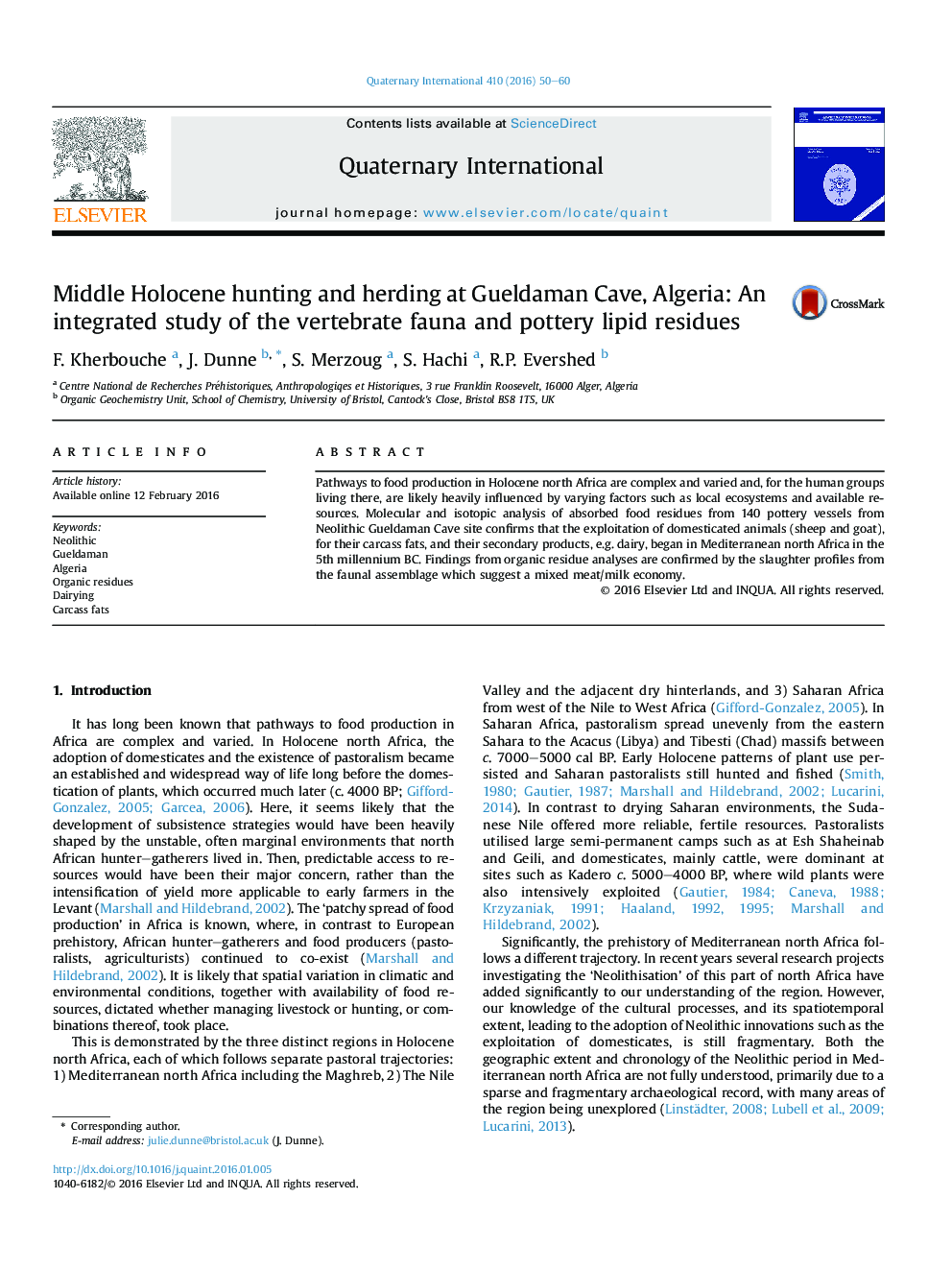| Article ID | Journal | Published Year | Pages | File Type |
|---|---|---|---|---|
| 1039893 | Quaternary International | 2016 | 11 Pages |
Abstract
Pathways to food production in Holocene north Africa are complex and varied and, for the human groups living there, are likely heavily influenced by varying factors such as local ecosystems and available resources. Molecular and isotopic analysis of absorbed food residues from 140 pottery vessels from Neolithic Gueldaman Cave site confirms that the exploitation of domesticated animals (sheep and goat), for their carcass fats, and their secondary products, e.g. dairy, began in Mediterranean north Africa in the 5th millennium BC. Findings from organic residue analyses are confirmed by the slaughter profiles from the faunal assemblage which suggest a mixed meat/milk economy.
Related Topics
Physical Sciences and Engineering
Earth and Planetary Sciences
Geology
Authors
F. Kherbouche, J. Dunne, S. Merzoug, S. Hachi, R.P. Evershed,
